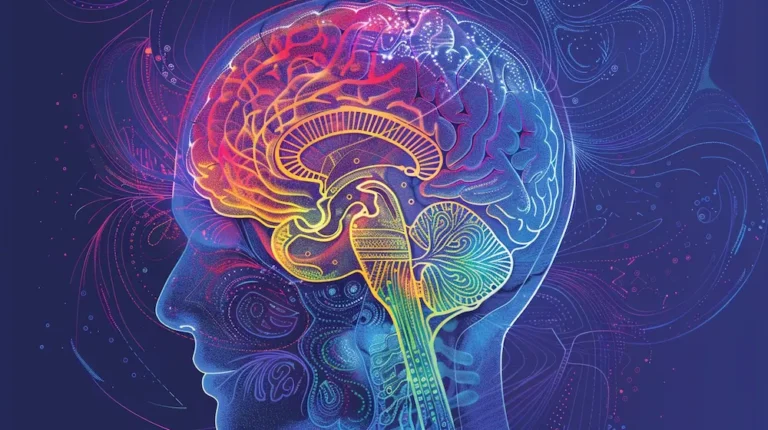Brain teasers are an excellent way for seniors to engage their minds, improve cognitive function, and enjoy some fun along the way.
These puzzles challenge critical thinking, enhance memory, and promote problem-solving skills.
In this article, I will share 30 of the best brain teasers for seniors that are not only entertaining but also beneficial for mental agility.
Whether you’re looking to keep your mind sharp or simply enjoy a good challenge, these brain teasers will provide you with hours of enjoyment.
Why Brain Teasers Matter for Seniors
Engaging with brain teasers offers numerous cognitive benefits, especially for seniors.
Here are some reasons why incorporating brain teasers into your routine is important:
- Enhances Cognitive Function: Regularly solving puzzles can improve memory, attention, and overall cognitive performance.
- Reduces Risk of Cognitive Decline: Studies suggest that engaging in mentally stimulating activities can lower the risk of dementia and Alzheimer’s disease.
- Boosts Problem-Solving Skills: Brain teasers encourage critical thinking and help seniors develop better problem-solving strategies.
- Provides Social Interaction: Solving puzzles with friends or family can foster social connections and enhance communication skills.
Types of Brain Teasers
Brain teasers come in various forms, each offering unique challenges.
Here are some common types you might encounter:
1. Riddles
Riddles are classic brain teasers that encourage lateral thinking and linguistic skills.
They often involve clever phrasing and double meanings.
Example: “What has keys but can’t open locks?”
Answer: A piano.
2. Logic Puzzles
Logic puzzles require deductive reasoning and the ability to eliminate possibilities based on given clues.
They help develop analytical thinking and attention to detail.
Example: “Three friends check into a hotel room that costs $30. They each contribute $10. Later, the hotel manager realizes the room should only cost $25 and gives $5 to the bellboy to return to the friends. The bellboy, however, keeps $2 for himself and gives $1 back to each friend. Now, each friend has paid $9 (totaling $27), and the bellboy has $2, which makes $29. Where is the missing dollar?”
Answer: There is no missing dollar; the confusion arises from how the amounts are added.
3. Mathematical Challenges
These brain teasers involve calculations, equations, and numerical reasoning.
They can range from simple arithmetic problems to more complex mathematical puzzles.
Example: “If five cats can catch five mice in five minutes, how long will it take one cat to catch one mouse?”
Answer: Five minutes.
4. Visual Puzzles
Visual puzzles challenge spatial reasoning skills.
They often involve finding differences between two similar images or identifying hidden objects.
Example: “How many triangles can you find in this figure?”
[Insert a complex image with many triangles of various sizes]
5. Lateral Thinking Puzzles
These puzzles require creative thinking and often involve scenarios that seem impossible at first.
They challenge you to think outside the box and come up with unconventional solutions.
Example: “A man is pushing his car along a road when he comes to a hotel. He shouts, ‘I’m bankrupt!’ Why?”
Answer: The man was playing Monopoly.
A Collection of 30 Brain Teasers for Seniors
Here’s a selection of 30 brain teasers to test your skills:
Riddles
- What has a neck but no head?
Answer: A bottle. - What has to be broken before you can use it?
Answer: An egg. - What begins with T, ends with T, and has T in it?
Answer: A teapot. - What can travel around the world while staying in a corner?
Answer: A stamp. - I’m tall when I’m young, and I’m short when I’m old. What am I?
Answer: A candle.
Logic Puzzles
- A farmer has 17 sheep, and all but 9 die. How many are left?
Answer: 9 sheep. - You see a boat filled with people. It has not sunk, but when you look again, you don’t see a single person on the boat. Why?
Answer: All the people were married. - If two’s company and three’s a crowd, what are four and five?
Answer: Nine. - How many times can you subtract 10 from 100?
Answer: Once. After you subtract it, you’re subtracting from 90. - How can 8 + 8 = 4?
Answer: When you think in terms of time. 8 AM + 8 hours = 4 o’clock.
Mathematical Challenges
- What is half of two plus two?
Answer: 3 (Half of two is 1, plus two is 3). - If you have three apples and you take away two, how many do you have?
Answer: Two (because you took them). - A train leaves the station at 3 PM traveling at 60 miles per hour. What time will it arrive at a station 180 miles away?
Answer: 6 PM (180 miles / 60 mph = 3 hours). - What three positive numbers give the same result when multiplied and added together?
Answer: 1, 2, and 3 (1 + 2 + 3 = 6 and 1 × 2 × 3 = 6). - If you multiply this number by any other number, the result will always be the same. What number is it?
Answer: Zero.
Visual Puzzles
- How many squares are in a chessboard?
Answer: 204 squares (including all sizes). - What is the missing number in this sequence: 2, 4, 8, 16, ?
Answer: 32 (each number is multiplied by 2). - How many triangles are in this image?
[Insert a complex image with many triangles of various sizes]
Answer: [Provide the answer based on the image]. - What comes once in a minute, twice in a moment, but never in a thousand years?
Answer: The letter “M.” - If you look at a clock at 3:15, what is the angle between the hour and the minute hand?
Answer: 52.5 degrees.
Lateral Thinking Puzzles
- A man is pushing his car along a road when he comes to a hotel. He shouts, ‘I’m bankrupt!’ Why?
Answer: He is playing Monopoly. - A woman is driving a car. She is not wearing a seatbelt, and a police officer stops her. However, she doesn’t get a ticket. Why?
Answer: She is not driving; she is parked. - You see a man in a suit and tie, but he is not going to work. Why?
Answer: He is attending a funeral. - A rooster lays an egg on top of a barn. Which way does it roll?
Answer: Roosters don’t lay eggs. - A man went to the store and bought a dozen eggs. He came home and dropped them all on the floor. How many eggs did he have left?
Answer: None. They all broke.
Additional Brain Teasers
- What has hands but can’t clap?
Answer: A clock. - What begins with an E, ends with an E, but only contains one letter?
Answer: An envelope. - What is special about these words: job, polish, herb?
Answer: They are pronounced differently when the first letter is capitalized. - What goes on four feet in the morning, two in the afternoon, and three in the evening?
Answer: A human (crawling as a baby, walking as an adult, and using a cane in old age). - What can you keep after giving to someone?
Answer: Your word.
Conclusion
Brain teasers are an excellent way to engage seniors’ minds and promote cognitive development.
By incorporating these 30 best brain teasers for seniors into your educational routine, you can help them improve their critical thinking, problem-solving, and linguistic skills while having fun.
Remember to adjust the difficulty level based on the individual’s age and abilities to ensure they stay engaged and challenged.
FAQs About Brain Teasers for Seniors
Why are brain teasers important for seniors?
Brain teasers help seniors develop critical thinking skills, improve problem-solving abilities, and enhance cognitive function.
They also provide educational entertainment and promote a love for learning.
What age group is best suited for brain teasers?
Brain teasers can be enjoyed by seniors of all ages.
The difficulty level can be adjusted to match the individual’s abilities.
How often should seniors practice brain teasers?
Incorporating brain teasers into a senior’s routine a few times a week can provide significant cognitive benefits.
However, it’s important to balance brain teasers with other activities.
Can brain teasers help seniors in daily life?
Yes, brain teasers can help seniors develop skills that are valuable in daily life, such as critical thinking, problem-solving, and attention to detail.
Are there specific resources for brain teasers for seniors?
Many websites, books, and apps offer a wide variety of brain teasers specifically designed for seniors.
How can family members encourage seniors to solve brain teasers?
Family members can introduce brain teasers during family game nights, provide puzzle books, or use online resources to make solving puzzles a fun and collaborative activity.
How do brain teasers benefit cognitive development in seniors?
Brain teasers stimulate various cognitive processes, including memory, attention, and reasoning, contributing to overall brain health and enhancing learning capabilities.
Can brain teasers improve social skills?
Yes, solving brain teasers in groups can enhance communication, collaboration, and teamwork, helping seniors develop important social skills.
What are some popular types of brain teasers for seniors?
Popular types of brain teasers for seniors include riddles, logic puzzles, math challenges, and visual puzzles, each offering unique cognitive benefits.
How can I create my own brain teasers for seniors?
Creating your own brain teasers can be a fun way to challenge seniors.
Consider using wordplay, logical scenarios, or visual patterns to craft engaging puzzles tailored to their interests and skill levels.
Share
Rewrite


